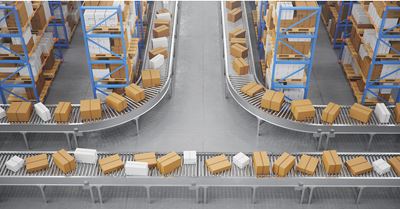How To Keep Your Conveyors Running Flawlessly

Conveyor systems are an essential part of many industrial operations. From preventative maintenance to regular inspection, cleaning and lubrication, and even keeping spare parts on hand, we'll cover everything you need to know to keep your conveyors running flawlessly.
Conveyors are central to many industrial processes. They help to move goods and materials from one place to another, and they play a crucial role in ensuring that manufacturing or distribution processes run smoothly. Conveyor outages can have devastating consequences for overall productivity. By following these tips, you can ensure that your conveyor system remains operational at all times.
Create A Training Program
While this may seem obvious, it is a surprisingly common weakness for many warehouse operators. It’s important that employees know what to look for when it comes to conveyor problems, as they are your eyes and ears in the warehouse.
Employees should feel free to report potential issues like belt slippage, spills that contaminate motors or gears, overloading, forklift impacts, misalignment, or anything else that seems outside of normal operating parameters.
Conduct Inspections Regularly
Finding potential failure points before they turn into problems can save you a lot of time and money. Here are some areas to inspect on your conveyor systems:
- Tracking: belts that are off track can result in belt damage, which can lead to additional problems with motors and gears. Any belts that are not tracking properly should be corrected as soon as possible.
- Belts or Chains: look for embedded debris, splitting, fraying, or excessive slack. Belts and chains wear out over time and need to be replaced.
- Motors and Gears: check motors and gears to ensure they are spinning freely and not making unusual noise or generating excessive heat.
- Bearings: examine your system for bearings that are noisy or appear to be restricted in any way.
Preventative Maintenance Is Key
There are a number of factors to consider when creating a preventative maintenance schedule for conveyor systems. These include the type of conveyor system being used, the age and condition of the equipment, and the workload that is being placed on the system. Ultimately, it is important to create a schedule that takes all these considerations into account.
You may wish to replace belts, chains, sprockets, gears and motors and predefined intervals or when components start to give signs that they may fail. In addition, cleaning and lubrication should be done on a regular basis.
Keep Spare Parts On Hand
For many warehouse and industrial facilities, conveyors are the backbone of their operation. When the conveyor stops, productivity plummets. Having spare parts at your disposal can prevent prolonged outages and save you hours or even days of downtime.
Although stocking a range of parts can be expensive, most of the time the cost of lost productivity will more than justify an investment in parts.
Call The Conveyor Experts
If you’d like a partner to handle inspections, preventative maintenance and repairs, get in touch with Raymond West today. Our team of warehouse automation technicians can help keep your conveyors in top condition.

